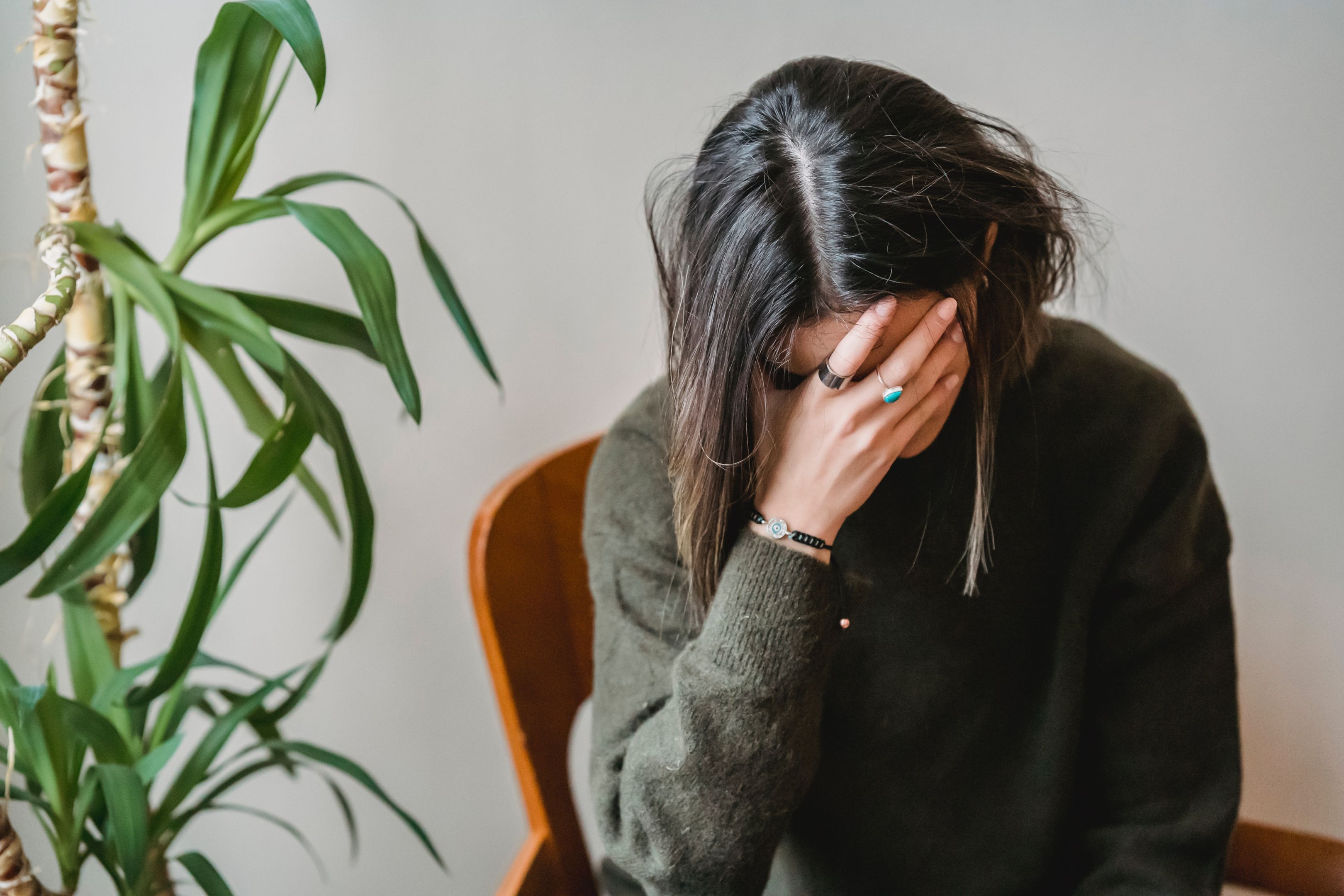Severe Period Pain on First-Day Home Remedies

Menstruation, a natural process experienced by women, brings a range of physical and emotional changes. While some women sail through their periods with minimal discomfort, others face the dreaded first day, where severe menstrual cramps becomes an unwelcome companion. Read more to explore Severe Period Pain on First-Day Home Remedies!
You’re not alone if you’ve ever curled up in bed, clutching a hot water bottle using a heating pad, desperately seeking relief from the intense cramps accompanying your menstrual cycle. Many women experience severe period pain on the first day, disrupting their daily activities and quality of life.
This blog will delve into severe period pain on first day home remedies to alleviate this discomfort. Seeking what works best for your body is crucial because what works for one person might not work for another. And let’s say you have any underlying health issues or worries. In that case, it’s always advisable to consult a healthcare professional before trying new remedies.
Read more to explore the realm of severe period cramps on the first day and discover effective home remedies to relieve when period cramps happen and help you find relief, regain control, and embrace life without the burden of debilitating menstrual cramps.
Understanding Severe Period Pain
Causes and Symptoms of Severe Period Cramps

Severe period cramps, or dysmenorrhea, can be caused by various factors. The primary cause of period cramping is believed to be the release of prostaglandins, hormone-like substances that stimulate uterine contractions and inflammation. When the uterus contracts strongly, it can temporarily disrupt blood flow to the surrounding tissues, leading to pain and discomfort.
In addition to prostaglandins, other factors that contribute to severe period pain include:
Hormonal imbalances: Fluctuations in hormone levels, particularly an excess of prostaglandins or a deficiency in endorphins (natural painkillers), reduce stress but can intensify menstrual cramps.
Uterine abnormalities: Conditions of uterine tissue such as fibroids (noncancerous growths in the uterus), adenomyosis (when the tissue lining the uterus grows into the uterine wall), or endometriosis (the presence of endometrial tissue outside the uterus) can cause severe period cramps.
Pelvic inflammatory disease (PID): Infections in the reproductive organs, such as the uterus, fallopian tubes, or ovaries, can result in painful periods.
The symptoms of severe menstrual pain can vary from woman to woman, but they commonly include:

Intense abdominal cramping: Cramps may range from mild to severe, causing a throbbing or stabbing pain in the lower abdomen.
Lower back pain: Many women experience accompanying lower back pain during their periods.
Nausea and vomiting: Severe period cramps can be accompanied by gastrointestinal symptoms, leading to feelings of nausea and sometimes vomiting.
Headaches and migraines: Hormonal fluctuations during menstruation can trigger headaches or migraines in some women.
Significance of Addressing the Issue Promptly

Addressing severe period pain promptly is crucial for several reasons. Firstly, the severe pain, and discomfort can significantly impact a woman’s quality of life and overall well-being. When pain becomes severe, it can limit one’s ability to carry out daily activities, attend work or school, and participate in social events. Women can regain control over their lives by finding effective home remedies to manage severe period pain and continue with their routine activities.
Impact of Severe Period Pain on Daily Life
The impact of severe menstrual cramps extends beyond physical discomfort. Women who experience debilitating menstrual cramps often also battle emotional distress. The constant pain and disruption to daily life can lead to feelings of anxiety, frustration, and even depression. Relationships, work productivity, and personal enjoyment can suffer as a result of severe cramps.
By exploring variou

s approaches to alleviate the pelvic pain themselves, women can reclaim control over their bodies, reduce the impact on their daily activities, and improve their overall well-being.
Traditional Methods to Relieve Period Pain on the First Day
Commonly Practiced Traditional Remedies
When it comes to relieving period cramps, traditional methods have been relied upon for generations. These time-tested remedies offer a holistic approach to alleviate discomfort, relieve inflammation and promote relaxation. Here are two commonly practiced traditional remedies:
Applying heat to the lower abdomen: This simple yet effective method to relieve period cramps involves placing a heat source on the lower abdomen, such as a hot water bottle or heating pad. The warmth helps relax the uterine muscles, increases blood flow, and reduces cramping.
Warm baths or showers: Immersing oneself in a warm bath or standing under a soothing shower can relieve menstrual cramps. The warm water helps relax the pelvic muscles, can ease period cramps and tension, and promote overall relaxation.
The Science behind these Remedies and their Effectiveness
Applying heat to the lower abdomen and taking warm baths or showers have a scientific basis for their effectiveness to relieve pain. Heat application helps increase blood flow to abdominal muscles, reducing muscle contractions and easing pain. It also stimulates the release of the body’s natural painkillers, endorphins, providing additional relief.
Warm baths or showers have a similar effect. The warm water is a natural muscle relaxant, reducing cramping and tension. Additionally, the relaxation induced by warm water can positively impact overall mood and well-being.
Tips on Effectively Utilizing These Traditional Methods

To effectively with menstrual symptoms and utilize traditional methods for relieving period pain, consider the following tips:
- Apply heat for 15-20 minutes: Ensure the heat source is warm but not uncomfortably hot. Use a cloth barrier between the heat source and your skin to avoid burns.
- Practice relaxation techniques: Combine heat application with deep breathing, gentle stretches, or meditation to enhance relaxation and pain relief.
- Take warm baths or showers for 15-20 minutes: Adjust the water temperature to a comfortable level, ensuring it is warm enough to relax your muscles without causing overheating.
- Add soothing ingredients: Enhance the benefits of warm baths by adding relaxing elements such as Epsom salts, essential oils (such as lavender or chamomile), or herbal bath infusions.
Remember, these traditiona

l methods may not provide instant relief for everyone, as individual experiences with period pain can vary. Exploring a combination of remedies is essential to find the best for your unique needs.
Modern Approaches to Alleviate Period Pains at Home
Non-Traditional Methods for Fast Relief

In addition to traditional remedies, modern approaches can offer quick relief from period pains. Consider incorporating the following non-traditional methods into your menstrual pain relief and management routine:
Engaging in light exercises and stretching: Although it may seem counterintuitive, light and gentle stretches can help alleviate period cramps. Walking, yoga, or Pilates promote blood circulation, release endorphins, and can reduce cramps and muscle tension.
Using over-the-counter pain relievers: Over-the-counter (OTC) pain relievers, such as nonsteroidal anti-inflammatory drugs (NSAIDs) like ibuprofen, can effectively reduce menstrual cramps. These medications work by inhibiting the production of prostaglandins, thereby reducing inflammation of blood vessels and alleviating pain from painful cramps.
Advantages and Limitations of Modern Approaches
Modern approaches provide additional options for fast relief from period pains. Light exercises and stretching can have long-term benefits beyond pain relief, such as improving overall fitness and well-being. OTC pain relievers offer quick relief and are readily available, making them convenient for managing severe period pain.
Natural Painkillers for Periods: Nature’s Remedies
Introducing Natural Alternatives to Conventional Painkillers
For those seeking natural alternatives to conventional painkillers, nature offers a treasure trove of remedies to help alleviate period pain. These natural painkillers provide a holistic approach to managing discomfort with minimal or no side effects. Let’s explore some of these natural alternatives and their benefits.
Highlighting the Benefits of Using Natural Remedies
Herbal Teas and Infusions:
Herbal teas have long been used for their medicinal properties and soothing effects. Certain herbs possess anti-inflammatory and antispasmodic properties, making them ideal for relieving period pain. Chamomile tea, for example, can help relax muscles and reduce menstrual cramping. Ginger tea is known for its anti-inflammatory properties, which can alleviate pain. Raspberry leaf tea has been traditionally used to tone the uterus and ease menstrual cramps. These herbal teas not only provide relief but also offer a comforting and calming experience during menstruation.

Essential Oils for Aromatherapy:
Aromatherapy can be a powerful tool for managing menstrual cramps using essential plant oils. Essential oils such as lavender, clary sage, and marjoram have analgesic and muscle-relaxing properties. When used in aromatherapy, either through inhalation or diluted application, these oils can help reduce pain and promote relaxation. The soothing scents can also positively impact mood and overall well-being during menstruation.
Instructions on How to Prepare and Use Natural Painkillers
To effectively prepare and use these natural painkillers, follow these instructions:
Herbal Teas and Infusions:
- Choose high-quality, organic herbs or tea bags from reputable sources.
- Boil water and pour it over the herbs or tea bag.
- Cover and steep for the recommended time (usually 5-10 minutes).
- Strain the tea and drink it while it’s warm.
- Add honey or lemon for flavor, if desired.
- Aim to drink 2-3 cups of herbal tea per day during your period for optimal relief.
Essential Oils for Aromatherapy:
- Select high-quality, pure essential oils from reputable brands.
- Dilute the essential oil with a carrier oil, such as sweet almond oil or coconut oil, using a ratio of 3-5 drops of essential oil per teaspoon of carrier oil.
- Apply the diluted oil to your lower abdomen and massage gently in a circular motion.
- Alternatively, add a few drops of the essential oil to a diffuser or inhale directly from the bottle for aromatherapy benefits.
- Use essential oils as needed throughout the day or during discomfort.
Remember to patch-test essential oils on a small skin area before using them topically, as some individuals may have sensitivities or allergies. Additionally, before taking herbal teas or essential oils, speak with a healthcare provider if you have any underlying medical concerns, are pregnant, or are nursing a baby.
By incorporating these natural painkillers into your routine, you can find relief from period pain while embracing the therapeutic properties of nature. Experiment with herbal teas and essential oil combinations to discover the best ones for you.
Hydration and Diet: A Holistic Approach to Reduce Period Pain
The Relationship between Hydration and Period Pain
Hydration plays a crucial role in managing period pain. Dehydration can exacerbate cramps and increase discomfort during menstruation. Staying properly hydrated helps maintain overall body function, including the muscles and reproductive system. It also aids in reducing inflammation and promoting optimal blood flow.
Drinks that can Help Alleviate Period Pain
Herbal Teas and Warm Beverages:
Sipping on herbal teas can provide both hydration and natural period pain relief. Certain herbal teas, such as peppermint, chamomile, and ginger, have anti-inflammatory and soothing properties to help ease period pain. Warm beverages like hot water with lemon or herbal infusions can also provide comfort and hydration.
Hydrating Fruits and Vegetables:
Besides beverages, consuming hydrating fruits and vegetables can contribute to overall hydration and provide essential nutrients. Water-rich fruits like watermelon, cucumber, strawberries and vegetables like celery and lettuce can help replenish fluids and support overall well-being during menstruation.

Dietary Tips for Reducing Period Pain and Inflammation
Making mindful dietary choices can help reduce period pain and inflammation. Consider the following tips:
Increase Omega-3 Fatty Acids: Include foods in your diet that are rich in omega-3 fatty acids, such as fatty fish (salmon, mackerel), flaxseeds, chia seeds, and walnuts. Omega-3 fatty acids show anti-inflammatory properties that can help alleviate menstrual pain.
Reduce Salt Intake: High salt intake can contribute to water retention and bloating, exacerbating period symptoms. Limit processed and salty foods during your menstrual cycle.
Incorporate Anti-inflammatory Foods: Include foods with natural anti-inflammatory properties, such as turmeric, ginger, cinnamon, and leafy greens like spinach and kale. These foods can help reduce inflammation and ease menstrual discomfort.
Maintain Balanced Meals: Focus on consuming a balanced diet with lean proteins, whole grains, and plenty of fruits and vegetables. This provides essential nutrients and supports overall well-being.
Stay Hydrated: Throughout the day, drink enough water to stay hydrated and promote healthy bodily functioning. Try to drink eight glasses of water each day.

Dietary changes may not provide immediate relief, but consistent healthy eating habits can contribute to long-term well-being. They may help reduce period pain over time. Also, consult a healthcare professional or a registered dietitian for personalized dietary advice.
By embracing a holistic approach to managing period pain through hydration and diet, you can nurture your body and support a more comfortable menstrual experience. Stay hydrated, choose nourishing drinks and foods, and prioritize self-care during this time of the month.
Conclusion:
Severe period pain can significantly disrupt a woman’s life, affecting her physical and emotional well-being. This article discusses traditional methods, modern approaches, natural painkillers, and dietary considerations to alleviate period pain on the first day.
Traditional remedies, such as applying heat to the lower abdomen and taking warm baths, can provide soothing relief. Modern approaches, including light exercises and over-the-counter pain relievers, offer alternative options for fast relief. Natural painkillers such dietary supplements such as herbal teas and essential oils provide a holistic approach. At the same time, hydration and dietary choices play a vital role in reducing period pain and inflammation.
The best treatments may require trial and error because each person’s experience with the period cramp pain or pain differs. Speaking with experts or healthcare professionals for individualized advice to treat menstrual cramps is always wise.
If you’re looking for more home remedies and effective solutions to relieve menstrual cramps, Totkay.com is your go-to resource. Visit Totkay.com to discover a wide range of articles, tips, and remedies to help you find relief during your menstrual cycle!

Hi, I’m a dedicated writer at Totkay.com, passionate about sharing practical tips and solutions to make your life easier. Explore my articles for helpful insights and valuable advice. Stay connected for more expert content!






